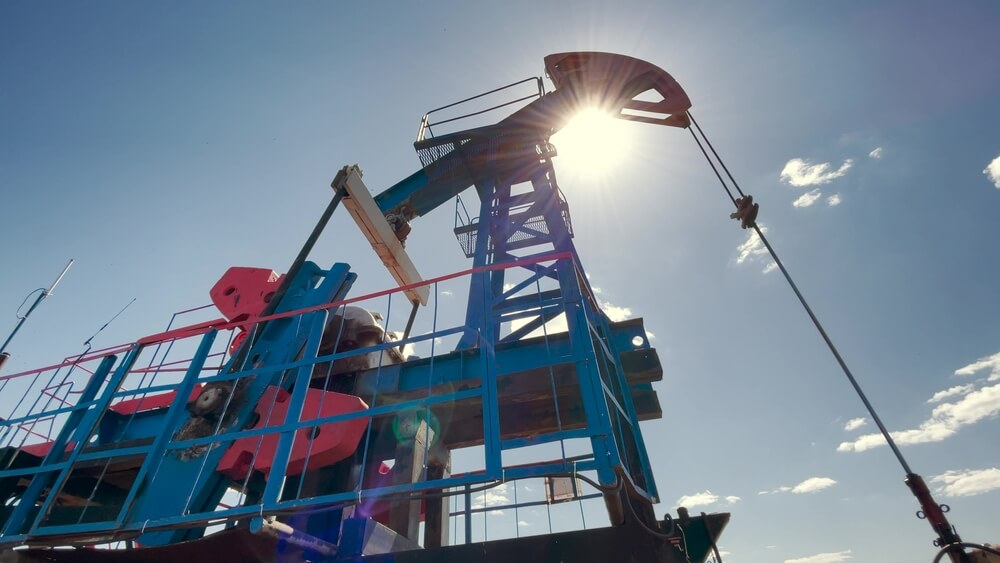At the OPEC+ meeting on 3 April, the energy ministers of OPEC members and allied countries discussed plans for the gradual lifting of production cuts.
Particular attention was paid to the proposal to increase output for May by 411,000 barrels per day instead of the previously planned 135,000 bpd.
Two days later, at the 59th meeting of the Joint Ministerial Monitoring Committee (JMMC) on 5 April, this unexpected acceleration of production increases for May was confirmed—the first time in the history of the block that the cuts were reversed before the end of the agreed period.
At the forthcoming meeting, scheduled for 5 May, the application of the same model for June will be discussed, while the price of Brent oil has already fallen below USD 60/barrel, the lowest level since February 2021.
OPEC+ has been cutting production quotas since the end of 2022 to neutralise pressure from a price drop caused by slow demand and stockpiling, but an unexpected increase in supplies in May forced the bloc to review its long-term strategy.
Fear of losing market share and fiscal pressure on government budgets are the main reasons behind the June proposal.
Saudi Arabia, which relies on financial reserves, is prepared to accept lower revenues in the short term to maintain member discipline and strengthen its negotiating position.
Russia, faced with secondary sanctions, sees the additional volumes as a way to maintain foreign exchange inflows, despite the risk of further price pressure.
A stable inflow of foreign exchange
For countries with low production costs—Saudi Arabia, the United Arab Emirates, and Kuwait—the accelerated increase in quotas means a stable inflow of foreign exchange, even at prices around USD 50 per barrel, allowing them to continue investing in strategic sectors and social programmes.
In contrast, Nigeria, Angola, and Algeria are facing serious fiscal consequences: Nigeria based its 2025 budget on a price of USD 75 per barrel. A drop below USD 60 forced the government to take rigorous austerity measures and look for alternative revenues.
Angola, which is dependent on the USD70 plan, is considering an IMF loan to cover the deficit, while Algeria is postponing infrastructure projects and making cuts to social programmes.
Technological innovations are reducing the cost per well but cannot fully compensate for the long-term losses if prices remain low
In the US, where the oil shale industry is seeing record production of over 13.7 million bpd, the decline in prices below the USD 58–65/barrel break-even point is causing independent producers to slow down their drilling and revise their capital plans.
Technological innovations such as triple‑frac (a method of hydraulic fracturing that uses multiple fractures to improve flow and recover hydrocarbons) are reducing the cost per well but cannot fully compensate for the long-term losses if prices remain low.
Uncertainty in energy portfolios
Declining fuel costs bring short-term savings for consumers in Europe and North America as they reduce transport and heating costs. In the Eurozone, where inflation is running at 2.2%, this relief gives the ECB more room to manoeuvre when deciding interest rates.
OPEC+ is using the accelerated increase in quotas to reaffirm the bloc's unity and send a clear message to consumers, particularly China, that all major decisions on oil supply will be made jointly while limiting manoeuvres to Iran, which is affected by secondary US sanctions.
From the perspective of international investors, sudden changes in quotas create additional uncertainty in energy portfolios
From the perspective of international investors, sudden changes in quotas create additional uncertainty in energy portfolios.
Funds and companies are responding by reducing their investments in new oil field developments and prioritising the rapid allocation of capital to renewable energy projects, which offer more stable and predictable returns.
This reallocation of capital could accelerate the development of solar and wind farms, particularly in regions such as the Middle East and Africa where high oil profits support economic diversification.
National investment funds, including the Government Pension Fund of Norway, are already diverting a significant proportion of their assets from the oil sector into sustainable technologies and infrastructure.
This diversification strategy reduces vulnerability to market shocks and promotes global green investment trends, undermining the dominant role of fossil fuels in the long term.
A new round of quota adjustments
If the April and May model is applied in June, the price of Brent oil could fall further below USD 55/barrel, particularly if global demand remains weak.
Conversely, easing trade tensions or accelerating demand growth in India and China could limit the downside and stabilise prices in the USD 60–65 range.
 If the bloc maintains its unity and adapts oil volumes to socio-economic realities, it is likely that a more resilient and predictable price structure will emerge in the long term
If the bloc maintains its unity and adapts oil volumes to socio-economic realities, it is likely that a more resilient and predictable price structure will emerge in the long term
A sustained low-price environment could trigger a new round of quota adjustments or require temporary tariff relief for developing countries.
The outcome of the meeting, which is scheduled for 5 May, will be an important indicator of whether OPEC+ can adjust its production quotas to the actual dynamics of global demand.
If the bloc maintains its unity and adapts oil volumes to socio-economic realities, it is likely that a more resilient and predictable price structure will emerge in the long term.
On the other hand, transitioning to a phase of fragmentation and inconsistent decisions would lead to new fluctuations that further burden the vulnerable budgets of exporters and complicate the energy transition process.